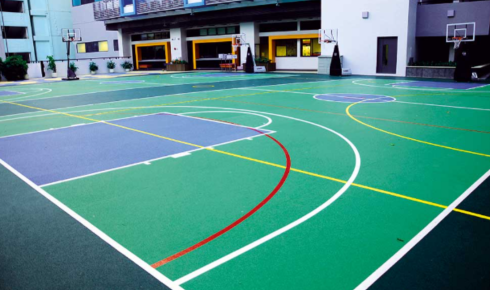Building or maintaining a tennis court involves much more than laying down a flat surface. From the foundation to the finishing touches, every component plays a crucial role in how the court performs. Among all aspects, tennis court materials form the backbone of a reliable, long-lasting, and high-performing playing surface. Whether you’re a school, sports club, private property owner, or government institution, choosing the right materials ensures durability, safety, and player satisfaction.
In this blog, we’ll take a closer look at the types of tennis court materials available, how to choose the right tennis court flooring, the importance of working with a trusted tennis court manufacturer, and when to consider tennis court resurfacing.
Why Tennis Court Materials Are Crucial
Tennis courts experience constant wear and tear due to weather, foot traffic, and ball impact. Therefore, selecting the right tennis court materials is essential not only for initial construction but also for long-term performance. The quality of materials impacts several critical aspects such as:
- Ball bounce consistency
- Surface grip and slip resistance
- Shock absorption and player comfort
- Weather resistance and UV durability
- Maintenance requirements and court lifespan
Tennis court materials vary based on the type of surface being installed—hard court, clay, grass, or synthetic. Each surface type requires specific materials suited to its use, environment, and expected level of play.
Understanding Tennis Court Flooring Options
When it comes to tennis court flooring, there are multiple surface types, each with its own characteristics and suitable materials:
1. Acrylic Hard Courts
The most common type in both residential and professional settings. Synthetic acrylic coatings are applied over a concrete or asphalt base, offering a balance between speed, durability, and low maintenance. These courts use layered systems that may include:
- Asphalt or concrete base
- Rubber cushioning layers (optional)
- Multiple coats of acrylic paint
- Anti-slip and UV-resistant top finishes
Acrylic tennis court flooring is ideal for outdoor use due to its excellent weather performance and ease of upkeep.
2. Cushioned Courts
Using extra layers of rubber granules or polyurethane under the top acrylic surface, these courts offer enhanced shock absorption. These are often preferred for schools, clubs, and high-performance training centers where player comfort and injury prevention are a priority.
3. Clay or Synthetic Clay
While traditional clay courts are labor-intensive, synthetic clay options offer a similar playing experience with reduced maintenance. These courts require different materials such as fine aggregates, binders, and stabilizing layers.
4. Artificial Turf
Used for recreational purposes or where natural grass is difficult to maintain, artificial turf tennis courts include infill materials and synthetic fibers over drainage and base systems.
Selecting the appropriate flooring depends on several factors including location, budget, frequency of use, and player level.
Choosing the Right Tennis Court Manufacturer
Installing or renovating a tennis court is a specialized task. A professional tennis court manufacturer doesn’t just provide the materials—they bring experience, design insight, and technical precision.
What to Expect from a Reputable Manufacturer:
- Guidance in choosing the right court system
- Use of certified, tested, and weather-resistant materials
- Proper base construction for drainage and stability
- Layer-by-layer installation, including cushioning and topcoats
- Accurate line marking and court finishing
By working with an expert, you avoid costly errors and ensure the court performs well over time. Moreover, manufacturers often offer warranty-backed materials and follow standards set by international sports bodies.
When Should You Consider Tennis Court Resurfacing?
Even the best courts age. Over time, exposure to sun, rain, and heavy use causes the surface to fade, crack, or become uneven. This is when tennis court resurfacing becomes necessary.
Signs Your Court Needs Resurfacing:
- Visible cracks or surface peeling
- Fading colors or worn line markings
- Water accumulation or poor drainage
- Slippery or uneven playing surface
Resurfacing includes repairing the base, applying fresh coatings, repainting game lines, and sometimes reapplying cushioning systems. It’s a cost-effective way to restore performance and aesthetics without full reconstruction.
Resurfacing typically extends a court’s life by 5–7 years, making it an important part of ongoing maintenance.
Maintenance Tips for Longevity
Once your court is built or resurfaced using the right tennis court materials, consistent maintenance is key. Here are a few quick tips:
- Clean the surface regularly to remove debris and dust
- Inspect for cracks or surface damage after seasonal changes
- Repaint faded lines as needed
- Use proper drainage systems to prevent water pooling
- Schedule resurfacing every few years based on usage
Final Thoughts
Whether you’re building a new court or upgrading an existing one, the right tennis court materials lay the groundwork for a top-quality playing experience. From tennis court flooring to working with a professional tennis court manufacturer, every step matters in achieving a safe, durable, and visually appealing court.
If your court is showing signs of wear, don’t delay a proper tennis court resurfacing. With the right materials and timely care, your court can deliver peak performance for years to come.




